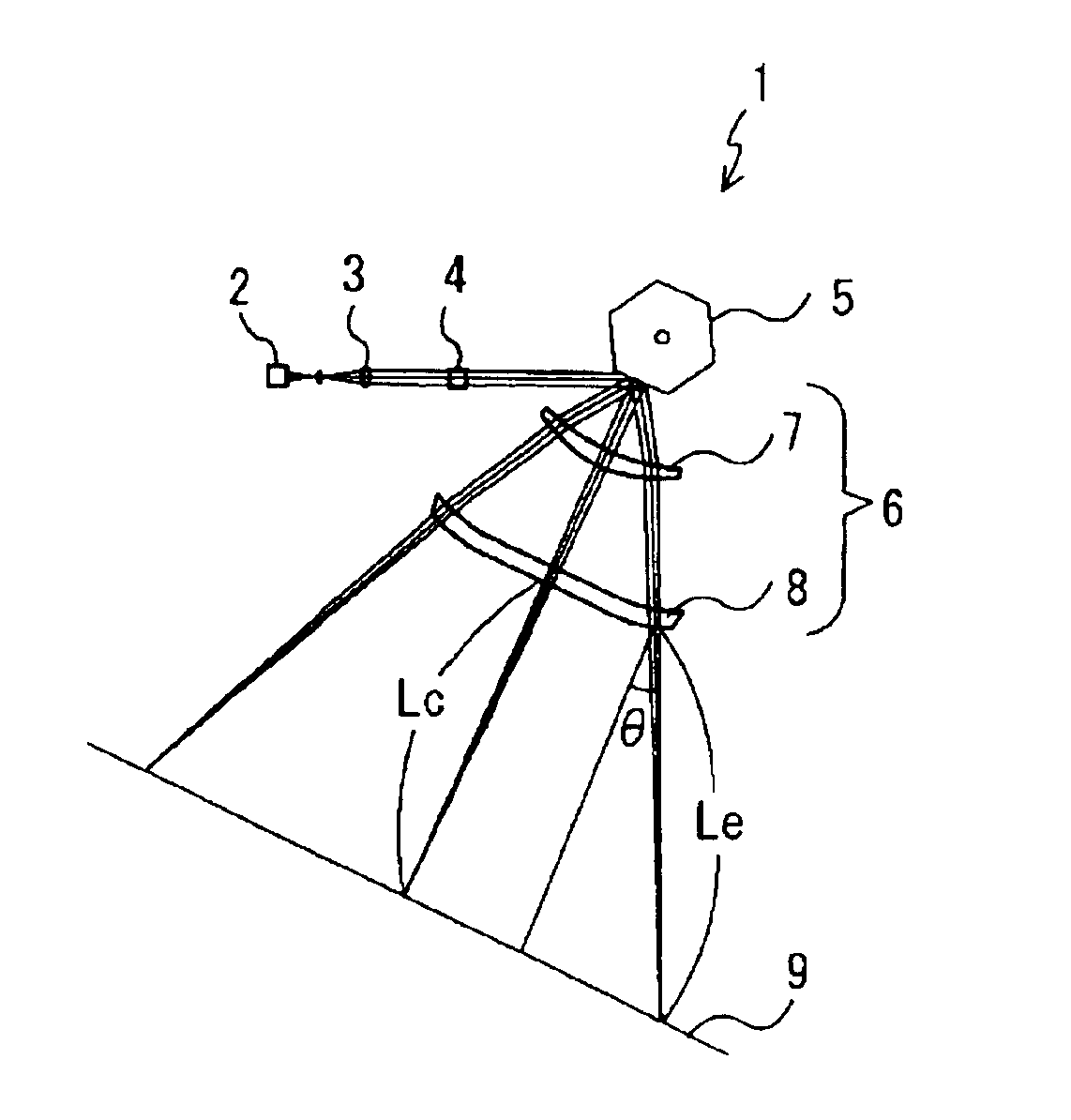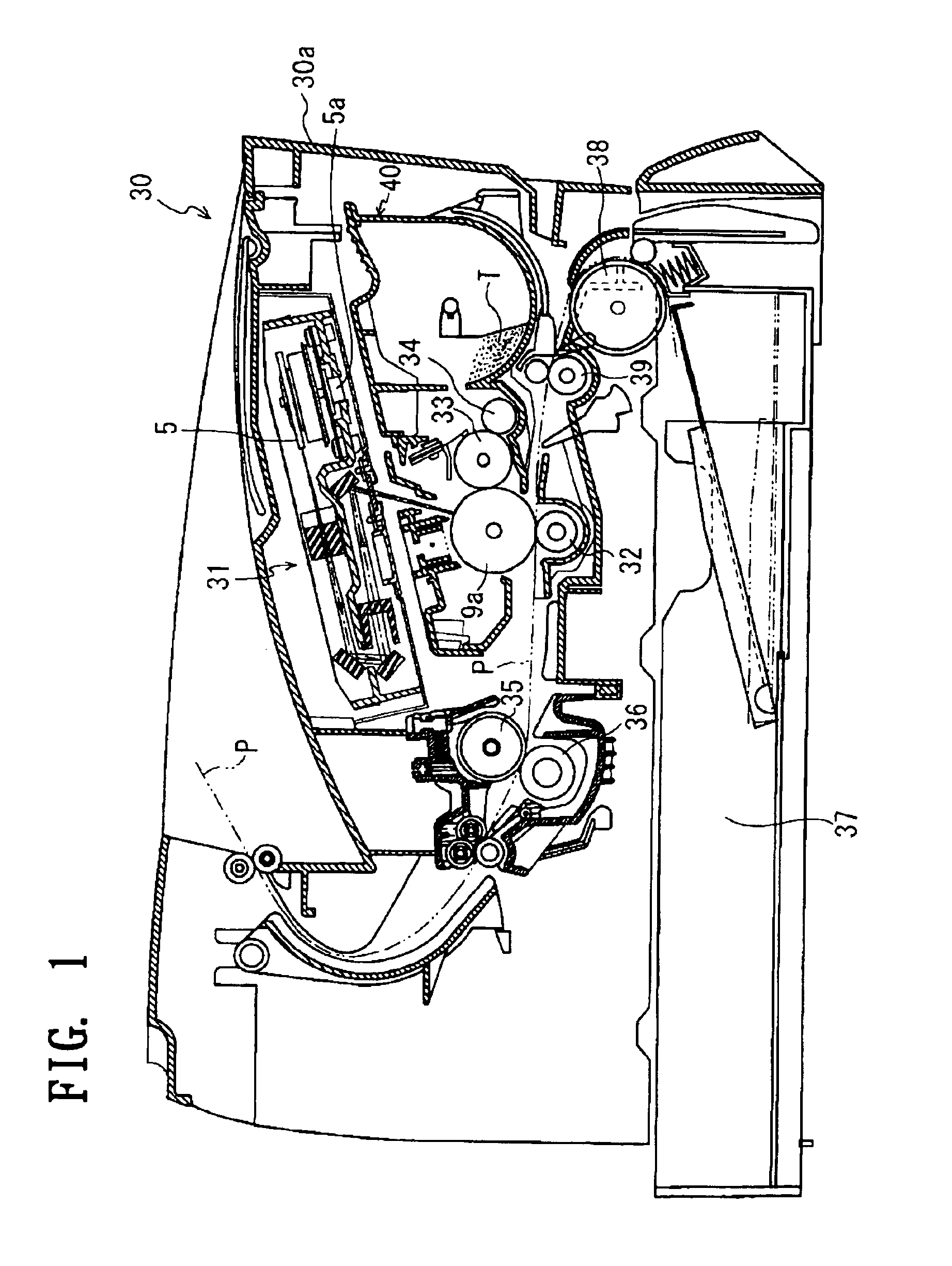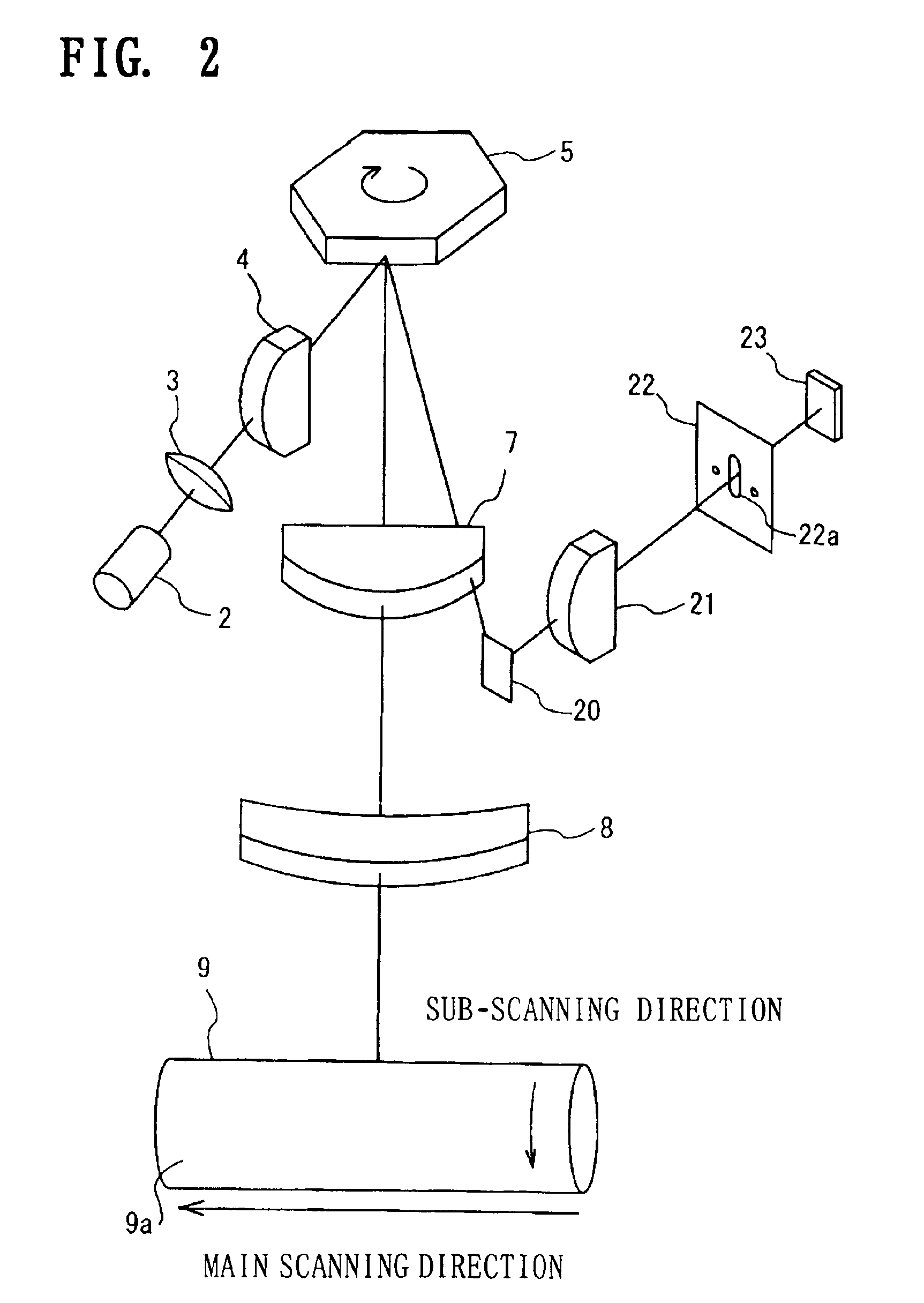Optical scanning system
- Summary
- Abstract
- Description
- Claims
- Application Information
AI Technical Summary
Benefits of technology
Problems solved by technology
Method used
Image
Examples
Embodiment Construction
[0023]A preferred embodiment of the invention will be described in detail with reference to the accompanying drawings. FIG. 1 is a cross sectional view of a laser printer 30 incorporating a laser scanner unit 31 according to an embodiment of an optical scanning system of the invention. FIG. 2 is a schematic view of an optical system inside the laser scanner unit 31.
[0024]A structure of the laser printer 30 will be described with reference to FIG. 1. As shown in FIG. 1, the laser printer 30 includes the laser scanner unit 31 and a photosensitive unit 40 in substantially a cuboid casing 30a. A sheet cartridge 37 is detachably provided at a lower portion of the laser printer 30. Sheets of paper P are stacked in the sheet cartridge 37, each of the sheets is conveyed to a lower part of the photosensitive unit 40 by a sheet feed roller 38 and a conveyor roller 39. Toner T is contained in the photosensitive unit 40, and supplied to a developing roller 33 by a toner supply roller 34. From t...
PUM
 Login to View More
Login to View More Abstract
Description
Claims
Application Information
 Login to View More
Login to View More - Generate Ideas
- Intellectual Property
- Life Sciences
- Materials
- Tech Scout
- Unparalleled Data Quality
- Higher Quality Content
- 60% Fewer Hallucinations
Browse by: Latest US Patents, China's latest patents, Technical Efficacy Thesaurus, Application Domain, Technology Topic, Popular Technical Reports.
© 2025 PatSnap. All rights reserved.Legal|Privacy policy|Modern Slavery Act Transparency Statement|Sitemap|About US| Contact US: help@patsnap.com



